 |
The next BioRow Webinar |
The next BioRow Webinar on Rowing Biomechanics is scheduled on Friday the 4th June2021 at noon 12.00 BST (London, UK).
Topic: Blade work and balance
The Webinar will last for 1.5-2 hours and will consist of two of 30-40 min presentations interleaved with interactive periods for questions from the audience and discussions.
We are looking forward to seeing you! |
01/06/2021 |
View |
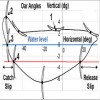 |
Blade work profile during recovery |
Christian Lindig from Chesterton RC in Cambridge, UK asks: “You have looked at blade work profiles and I notice that they show in general a slight dipping of the hand before the catch... Do you see any evidence for this in your data, or is dipping the hands universal across all boat classes?” |
30/05/2021 |
View |
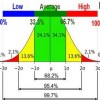 |
New BioRow developments |
A new template of biomechanical data evaluation has been developed for BioRow biomechanical measurements reports. In addition to comparison with Gold Standard Targets, there is now a statistical evaluation of each important indicator based on its group average and standard deviation, which were obtained from the BioRow database (n>40k) for each boat type.
Our Visual Immediate Feedback System (VIFS) was recognised by rowers and coaches as the most effective tool for technique improvement, because rowers can see in a real time what they are doing in a boat and can correct details of their technique from stroke to stroke. The latest version of our BioRow VIFS is based on a head-mounted displays with inbuilt video receivers and a video transmitter “Video TX”, which can take HDMI or analogue signal from the camera and send it to the goggles. |
20/05/2021 |
View |
 |
News & "Stroke rate and rowing efficiency" |
Rowing Biomechanics and technique are very different at low and high stroke rates. High rates differ by faster rower’s movements and better crew synchronisation, but lower quality of blade work and increased inertial losses. Constant practice of high racing rates during the whole season to maintain racing technique during base training at low rates. It is a good idea to include short 20-30s bursts into long steady-state workouts, which does not create excessive lactate, and even helps to improve aerobic training and lactate utilisation. |
04/04/2021 |
View |
 |
Effect of stroke rate on rowing technique |
Stroke rate is an incredibly important factor of rowing technique, and every time we have discussed biomechanical variables and indicators, we mentioned their dependence on the stroke rate. Previously this topic was scattered around many publications, but here it is summarised in one place to give a clearer and more solid picture. |
16/03/2021 |
View |
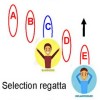 |
More about seat racing for selection |
Three types of factors could be identified in the seat racing for selection: biomechanical, physiological and psychological. The nature of the biomechanical factors of a crew’s efficiency are good synchronisation in a crew, then why do we expect rowers to achieve this in merely a few minutes? From a physiology point of view, there is no reason why good single scullers cannot form a good big boat. Psichologically, athletes perform differently at high stress of official regatta and at lower stress of seat-racing and this should be accounted in selection. |
28/01/2021 |
View |
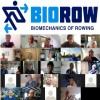 |
The next BioRow Webinar on Rowing Biomechanics is scheduled on Friday the 22nd January 2021 at 11.00am BST (London, UK) |
Topic: Blade efficiency and rowers selection
Contents:
1. Overview of the oar mechanics and blade propulsive efficiency;
2. The latest findings on comparison of various blade types;
3. Discussion on blade efficiency;
4. Rowers selections methods;
5. Seat racing: pro and contra;
6. Discussion on rowers’ selection. |
15/01/2021 |
View |
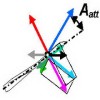 |
Fine oar mechanics |
We continue the analysis of oar mechanics with two purposes here: 1) verify checksum of oar forces with the measured gate-pin forces; 2) relate oar forces with the propulsion of the rower-boat system. Fat2 has a higher propulsive blade force due to bigger blade area and shorter actual outboard, but this was not converted into an advantage in the rower-boat system propulsion. Contrarily, lower propulsive blade forces in Smoothies and Comps could be compensated by a higher blade velocity through the water due to a longer actual outboard, which creates an additional lift transferred as an axial oar force into the system propulsion. In addition, Smoothies and Comps may have lower drag force compared to Fat2 due to a smaller area, which also contributes to their higher system propulsion. |
02/01/2021 |
View |
 |
Comparison of different blade types |
The new measurement method of the blade centre of pressure, developed earlier, was used for the comparison of various blade types made by Concept2: Smoothies, Fat2 and the new Comps. The Centre of Pressure on the blade was similar with Smooth and Comps at 11-12cm from the blade top, but was located further in with the Fat2 – at 17-18cm. This means Fat2 blade does not require shorter outboard and blade length as thought before. Though Fat2 blades appeared to be the most efficient, they were qualitatively the most uncomfortable to row. The new Comp blade type showed a slightly better performance compared to the traditional Smoothies and were quite comfortable to row. |
23/12/2020 |
View |
 |
Front-line research on oar mechanics |
A new research project on the oar and the rowing system mechanics was started in October with a new measurement method, which allows us to define the real forces acting on the rowing system and hence the mechanics of power transfer and propulsion efficiency. The method has been successfully verified by means of hanging weights at various points on the oar handle and blade, then comparing the real position with the calculated one based on measured torques. Here are brief results of the first measurements with this new method in M1x at 30spm. |
11/11/2020 |
View |













